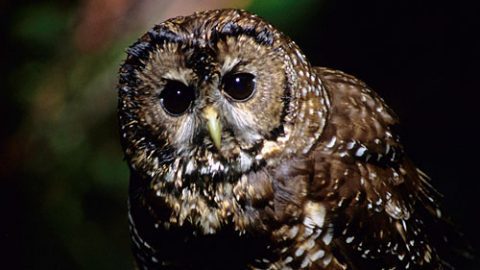They Had Feathers: Is the World Ready to See Dinosaurs as They Really Were?
By Stephen J. Bodio
From the Spring 2016 issue of Living Bird magazine.
Archaeopteryx illustration by Jane Kim. April 28, 2016In the movie Jurassic World, a pack of scaly velociraptors chases a man on a motorcycle.
There are two possible reactions to this scene. One, if you are among the blockbuster’s wider audience: Wow! Those dinosaurs look like they’re alive! Or two, if you are a paleontologist or a dinosaur-obsessed kid: Wait a minute. Those are too big to be velociraptors. And why are they covered with scales?
Dinosaurs have been getting slowly more birdlike for decades—perhaps not in mainstream depictions, but at least in the minds of paleontologists. This is thanks to three pioneers: the late John Ostrom of Yale, who discovered a fossil called Deinonychus in 1964 and hypothesized that it was warm blooded; John McLaughlin, a brilliant illustrator, science fiction writer, and scientist, who suggested that many dinosaurs were feathered and warm blooded in a 1979 book called Archosauria; and perhaps most memorable, Robert Bakker, a bearded, ponytailed paleontologist, who was once called a “fossil-junkie genius, the Galileo of paleontology.” He liked to describe Tyrannosaurus rex as “the 20,000 pound roadrunner from Hell.”
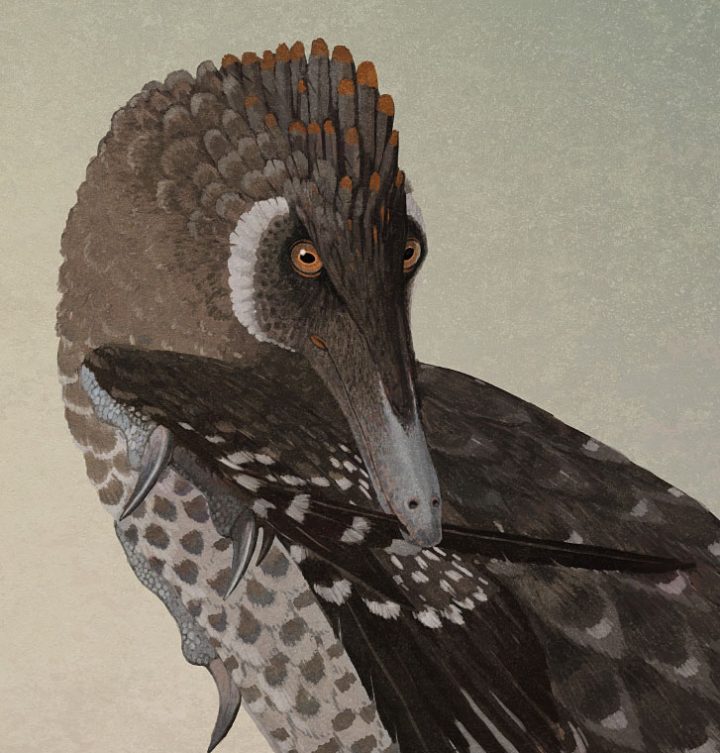
Now, thanks to troves of new fossil discoveries, those paleontologists and dinosaur-obsessed kids don’t just think but know: “Dinosaurs had feathers!” And not just hairy kiwi-style feathers, but complex, asymmetrical vaned ones, like the flight feathers of modern birds. This new thinking has been spurred on by discoveries of exquisitely detailed fossils in deposits of fine-textured lithographic limestone.
Since 1983, hundreds of such fossils— most of them from China—have reinforced the idea of warm-blooded, active, feathered dinos. Many are as detailed in their perfect reproduction of feathers as the iconic Archaeopteryx. The new fossils have provided clues for reinterpreting older fossils, too: we can now see where complex feathers attached (or “inserted”) on the arm bones of theropods, the carnivorous bipedal dinosaurs that include T. rex and the velociraptors. Still other fossils with feathers have been found in Mongolia.
Science illustrators are already embracing the new ideas, drawing and discussing cutting-edge paleontological ideas daily on their blogs. The time of the dinosaur’s dominance, from the end of the Triassic to the final catastrophic meteor strike, was not the Age of Reptiles. It was the Age of Big Weird Feathered Things. It’s just the mainstream world that is lagging behind.
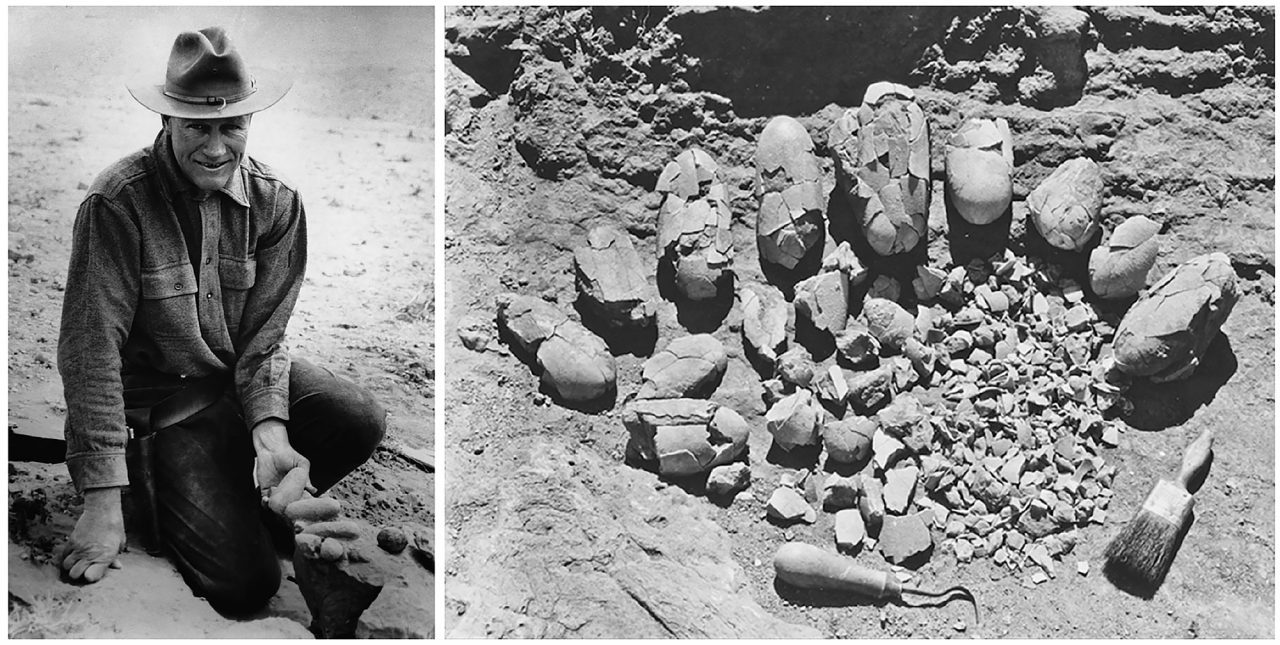
A New Paradigm
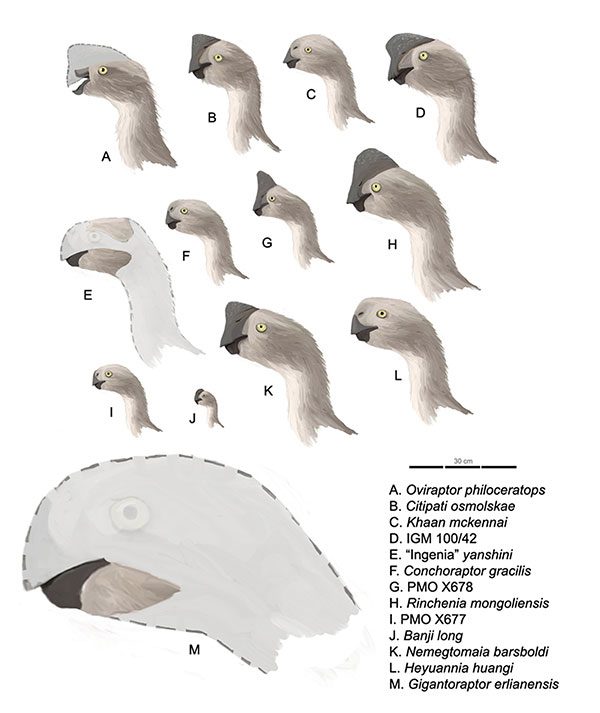
On a 1923 expedition to the flamming cliffs of Mongolia, Roy Chapman Andrews, the flamboyant prototype for Indiana Jones, discovered the first dinosaur eggs ever found. He also found the bones of a strange birdlike creature taller than a man, which he named Oviraptor, the egg thief. Oviraptor and its relatives have become stars in the new dinosaur menagerie. Ranging in size from smaller than a human to 10 feet tall, they are among the most birdlike dino fossils. They had toothless beaks and “wings” with clawed hands, too small to fly but with enough span to cover their eggs when on the nest. They were not stealing the eggs, but sheltering them from sudden dust storms. Some had fans of feathers at the ends of their tails, which we now know were marked in bold patterns that might have been used in courtship rituals. Some early observers thought Oviraptor was birdlike, but the “sluggish lizard” paradigm about dinosaurs was so established that physical evidence such as feather insertion points were overlooked for years.
Today, artist-scientists are ahead of both the public and the museums in visualizing the “new” dinosaurs. For example, Matthew Martyniuk’s cheeky Field Guide to Mesozoic Birds and Other Winged Dinosaurs is my favorite: a Peterson-style guide not only to birds like Archaeopteryx, but also birdlike dinosaurs. Under Martyniuk’s pen, these are more than lizards with feathers drawn on them; Velociraptor mongoliensis really does resemble a roadrunner in its “jizz” (a birder’s expression for a bird’s characteristic overall look and behavior).
The most comprehensive artistic compendium of Mesozoic art is a recent book called Dinosaur Art: The World’s Greatest Paleoart, edited by Steve White. Its depictions are magnificent, although only the raptors, the bird-sized carnivores, and the oviraptorids are feathered.
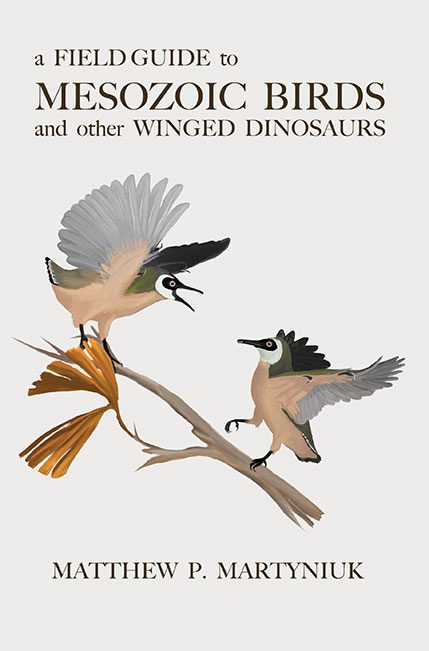
An artist named John Conway is now drawing fuzzy tyrannosaurids; he shows one chasing a pair of Gallimimus that look a lot like Emus except for their long tails. In other words, not just the main subject but all the dinosaurs in the image are feathered.
Some detractors justify the scaly status quo of mainstream dinosaur art by saying that birds are less scary than lizards. I doubt that anyone who says this has ever been up close and personal with a Golden Eagle, or seen one dive out of the Mongolian sky on a fox or a wolf. But things are changing. In 2012, Darren Naish wrote on his Scientific American blog about the recent discovery of Yutyrannus, an animal only slightly smaller than T. rex (10 meters from snout to tail tip), that lived in a region that had snow during the Cretaceous winters. What’s more, a patch of its skin was preserved, and it had shaggy, kiwi-like feathers. He titled the post, “There Are Giant Feathered Tyrannosaurs Now, Right?”
Artist Brian Choo’s illustration of Yutyrannus is the definition of the new view of dinosaurs. In it, a social group of yutyrannosaurs stalks through the painting—true to recent trackway discoveries that show that the big carnivores traveled in packs, or at least family groups. Underfoot is patchy, melting snow. Behind them are some scrubby pine trees, about the size of the pinyons in my New Mexico hills. A couple of pterosaurs soar above (and no, they do NOT have naked bat wings). In front of the big infernal roadrunners, a couple of birdlike, human-sized raptors flank them, like jackals scouting around a hunting lion.
Do you dare see T. rex as a bird? With feathers?
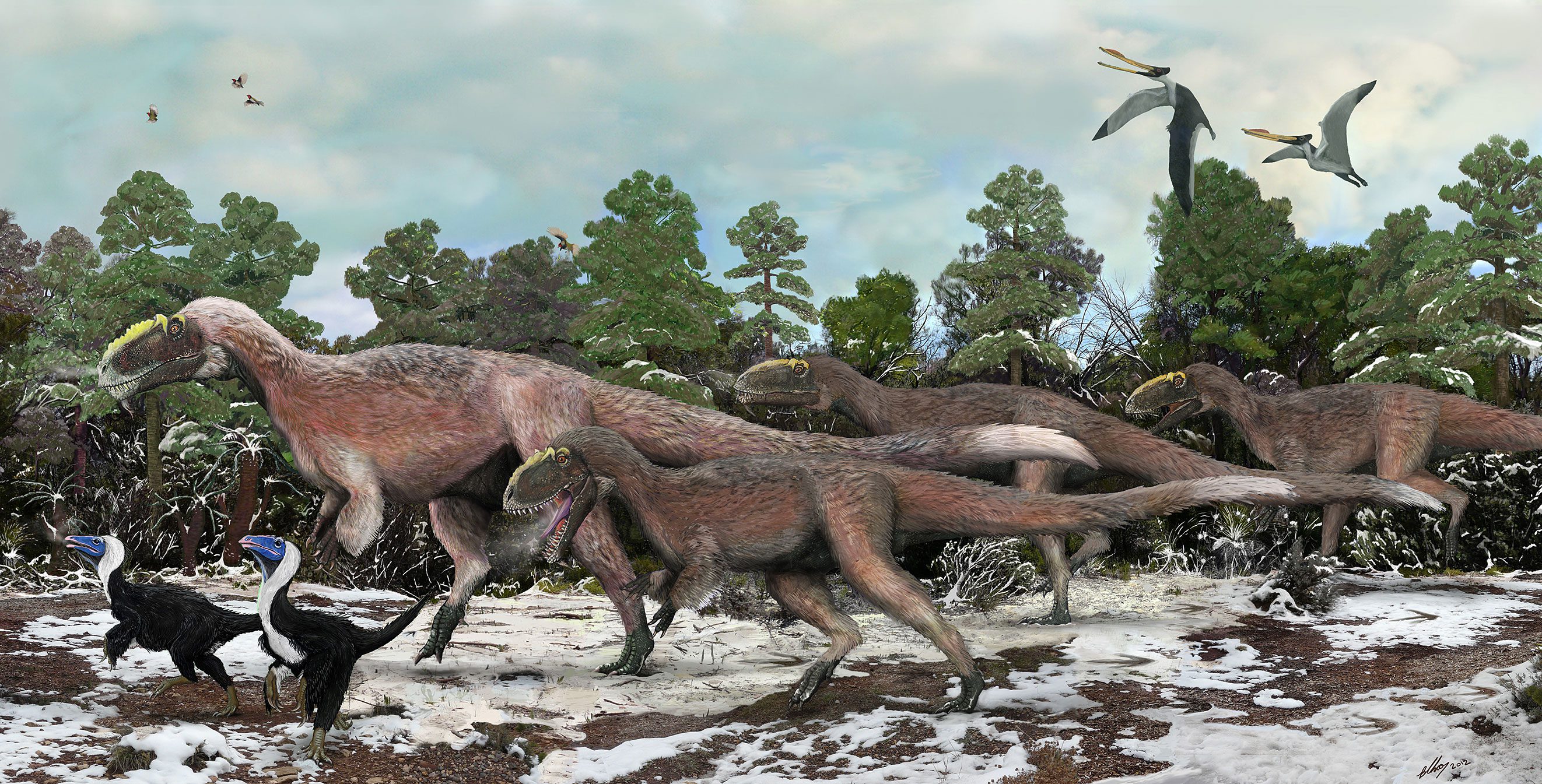
More Than Just Feathers
When paleontologists say that dinosaurs were birdlike, they’re talking about more than just feathers. It turns out that Saurischia—the dinosaur group that includes the theropods (including velociraptors and tyrannosaurs) and also the great sauropods (the largest land animals ever to walk the Earth, some formerly called “brontosaurs”)—had the incredibly efficient respiratory systems that distinguish birds today from all other animals. Air comes in, cycles through a network of air sacs in one direction, and flows out, allowing the animals to extract far more oxygen than the simple in-and-out breathing of mammals and reptiles. Paleontologist Peter Ward believed this was an evolutionary response to the catastrophic extinctions in the Permian Period, more than 250 million years ago. This was the greatest disaster life has ever faced (probably caused by hydrogen sulfide poisoning), when sea-level oxygen was equivalent to that at the top of Mt. Everest today. The efficient respiratory plan of dinosaurs and birds evolved then and, flowering in the Triassic, gave them the advantage over all other land animals, until their fatal asteroid crashed into the planet 65 million years ago.
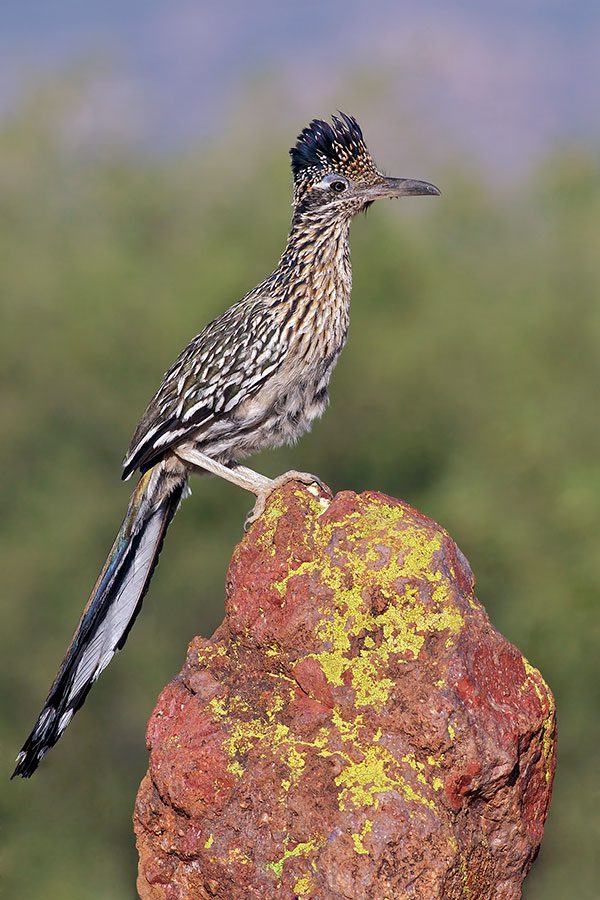
That respiratory system must have helped the enormous sauropods make it through this period. Before their relationship to birds was understood, evidence from fossilized tracks seemed to show that they lived in large migratory groups, with younger animals staying inside the protection of the herd, and with three-toed predators dogging their flanks. They must have eaten so much that they could not remain long in any single place, waiting for trees to replenish their growth. A sluggish “lizard” could hardly have had such a lifestyle. But the sudden vision of an enormous active animal, with its great body aerated and lightened by a system of air sacs, suddenly makes such roving herbivorous giants seem more plausible.
Even way over on the other side of the dinosaur evolutionary tree, the group known as the Ornithischia was probably birdlike too. A recently discovered fossil of a very early small dinosaur shows clearly that it had at least kiwi or Emu-type feathers, if not complex feathers like modern birds. The fossil dates from more than 200 million years ago, meaning it must resemble the ancestor of all dinos, Ornithischia and Saurischia alike. Its pelt seems to show that the earliest dinosaurs emerged from the Triassic with a warm covering and did not look like lizards at all; actually, they looked an awful lot like kiwis.
We don’t know yet what kind of surface covered all the big dinos, and such mammals as elephants and rhinos show that most hair, or feathers, can disappear on large animals that live in a warm climate. A warm covering of some sort would have in any case been useful at the higher latitudes, where many dinosaurs lived in ages when those regions were cold enough for snow, and dark during winter.
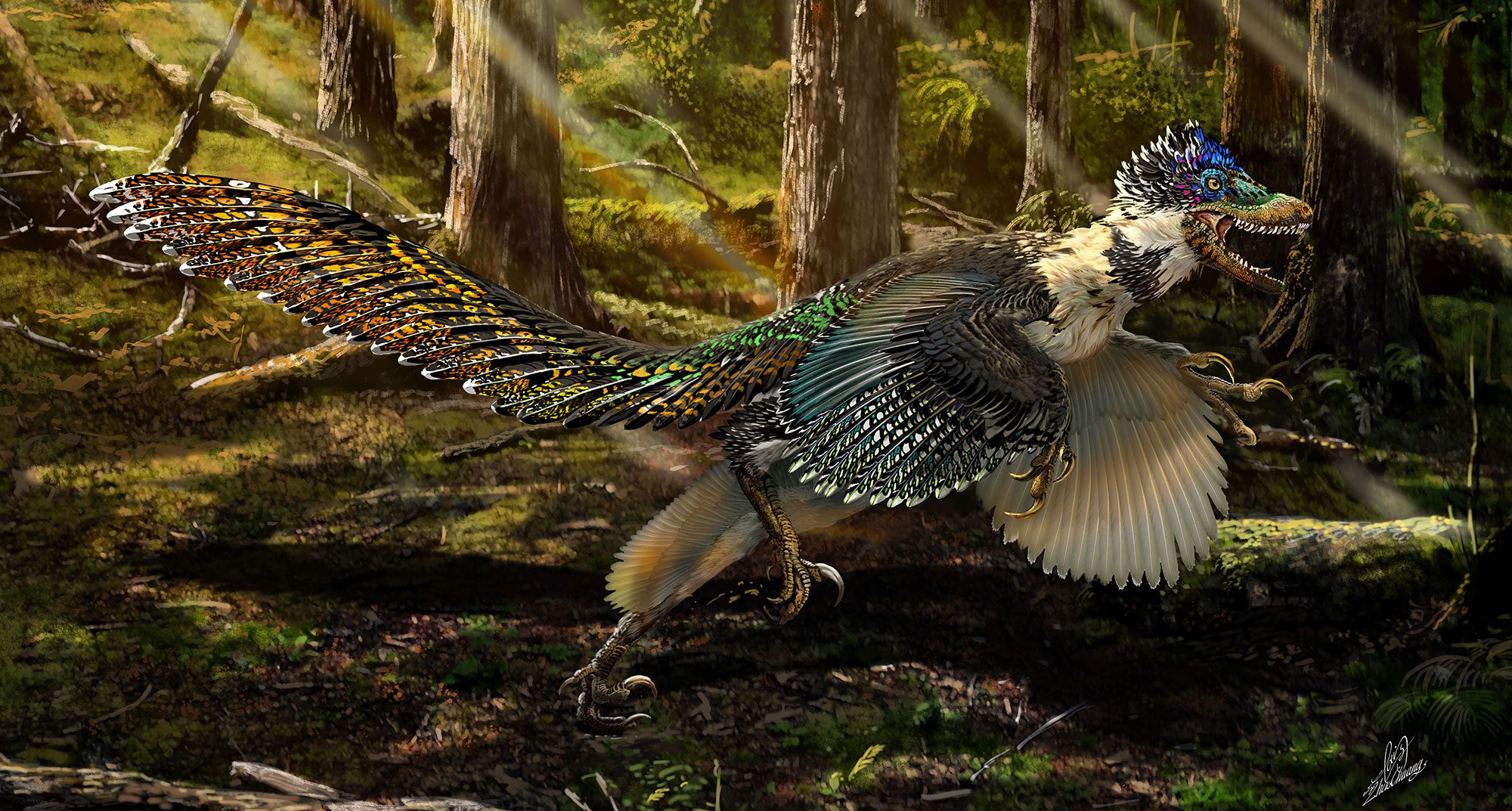
A Whole New View
The Mesozoic world was stranger than we ever imagined. It really was the Weird Feathered Thing planet. The biggest carnivores, with their nine-inch teeth, were more like roadrunners than lizards. The skies were full of pterosaurs, which were not dinosaurs, birds, or reptiles, in any sense that we understand the word reptile. Their wings were covered with fur or fuzzy feathers and they ranged from the size of a hummingbird to the wingspan, if not the weight, of a 747. Mark Witton’s book Pterosaurs and his blog show how some had crests like radio antennae, some walked around and fed like storks, and some had bold stripes on their impossible headdresses. Several modern forms of birds had already emerged—possibly, species not unlike chickens, ducks, parrots, and loons flew and swam around, surrounded by all those Weird Feathered Things. Only the mammals persisted like living fossils, remnants of a vanished age before the dinosaurs, furry and low-slung. As far as we know, no mammals were even as big as a German shepherd yet.
Then, in a moment, the world of birdlike monsters crashed. Their paradigm had shifted, leaving only enigmatic bones to remind us of the ancient ways. Their smaller relatives, the line of creatures we call true birds—and the mundane crawling furry things called mammals that the great dinos had suppressed and dominated for untold millennia—would radiate to fill the world once again with Darwin’s “endless forms.”
We would not be here if the world of the Mesozoic rulers had survived. But for a moment, let’s raise a glass to them, whose planetary reign of some 200 million years was far longer than our species has yet achieved. Their smallest survivors are everywhere you look: the chickadees at your feeder, the roadrunners bashing lizards against rocks, the condors soaring over mountain ranges.
And when you think about them, remember this: they had feathers.

All About Birds
is a free resource
Available for everyone,
funded by donors like you
American Kestrel by Blair Dudeck / Macaulay Library
